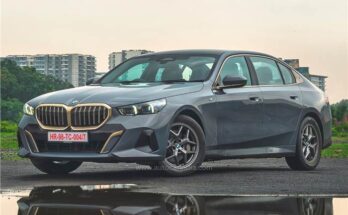BMW has improved the X7 in every important area courtesy of the most comprehensive mid-life update in a long time.
The first time I drove BMW’s massive X7 back in 2019, I came away really impressed. For one, it was just huge on the inside. It was superbly equipped, beautifully put together, and the cherry on the top was that it felt surprisingly nimble and light on its feet.
The weakest link at the time appeared to be the design. What I’m referring to, of course, is that big BMW kidney grille that really got a lot of ‘bad press’. There were memes, there were jokes and, as earlier with the 7 Series, the grille became the centre of attention.

However, despite all the hullabaloo, the X7 went on to become a considerable success. Today, that big grille is something of a non-issue; smaller than on rivals like the Audi and Lexus, BMW’s X7 today has found its place in the pantheon of full-sized, all singing all dancing luxury SUVs.
This then is the updated and much improved X7 xDrive40i. And yes, updated is the right word for the new X7. While it does initially appear to be a mere facelift, closer inspection shows it gets a significantly updated cabin, plenty of new kit, a much improved hybrid straight-six engine, and systems that help tidy up its driving manners. So, what all is new?
BMW X7 facelift: design and styling
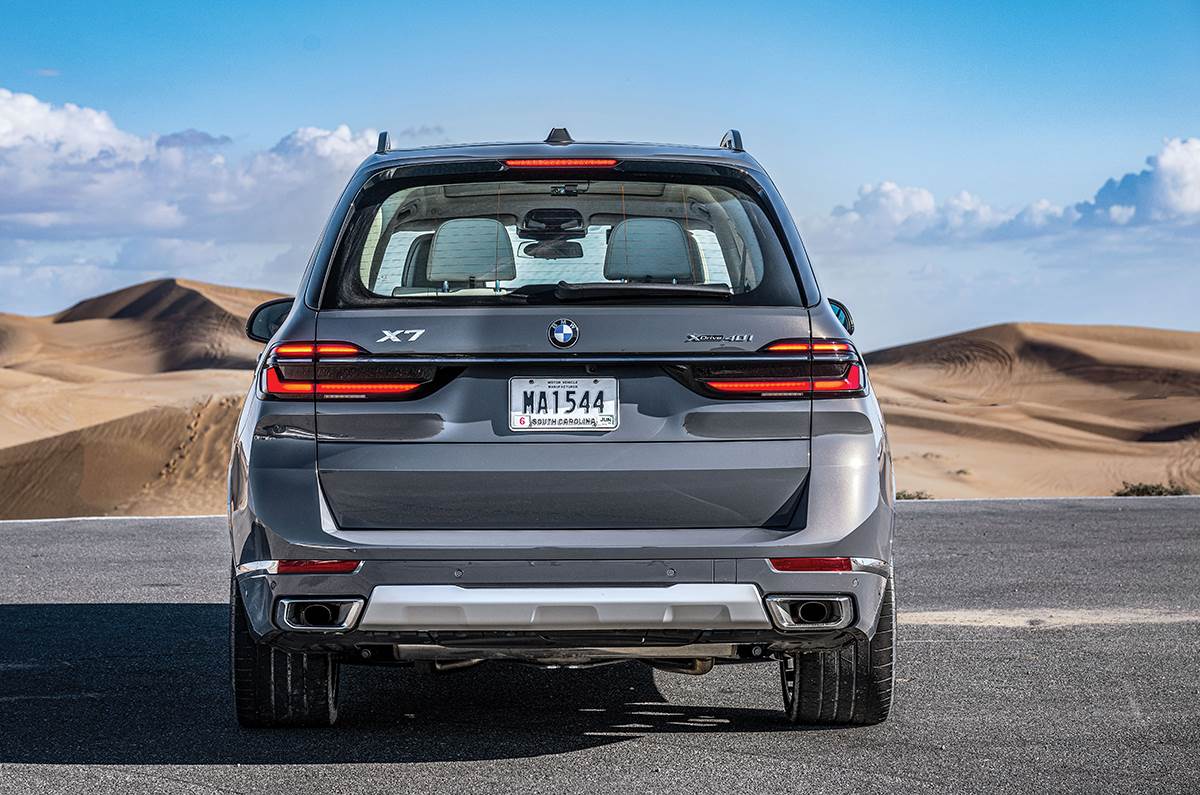 Design of the rear is very similar, only chrome bar has been deleted.
Design of the rear is very similar, only chrome bar has been deleted.
Well, first up, the new look. The nose is comprehensively altered. Up front, the new X7 gets BMW’s new split-headlamp arrangement and a new edgy detailing. The thin lamps on top are the daytime running lights and situated below in a wider band are the main headlights. It also gets a redesigned bumper and a reworked kidney grille, the latter now placed a bit higher up. Not much is new around the side, but the tail-lights are re-profiled and some of the detailing around the rear has been altered.
 Digital instrument panel looks funky but isn’t easy to read or get information off.
Digital instrument panel looks funky but isn’t easy to read or get information off.
There are also many significant interior upgrades. The dashboard has been re-styled, a new light bar enhances the mood on the inside and BMW’s twin-screen curved display panel has been plucked from its range of new electric cars and used here. It combines a 12.3-inch instrument panel and a 14.9-inch central infotainment screen, the latter runs BMW’s new operating system (ID8).
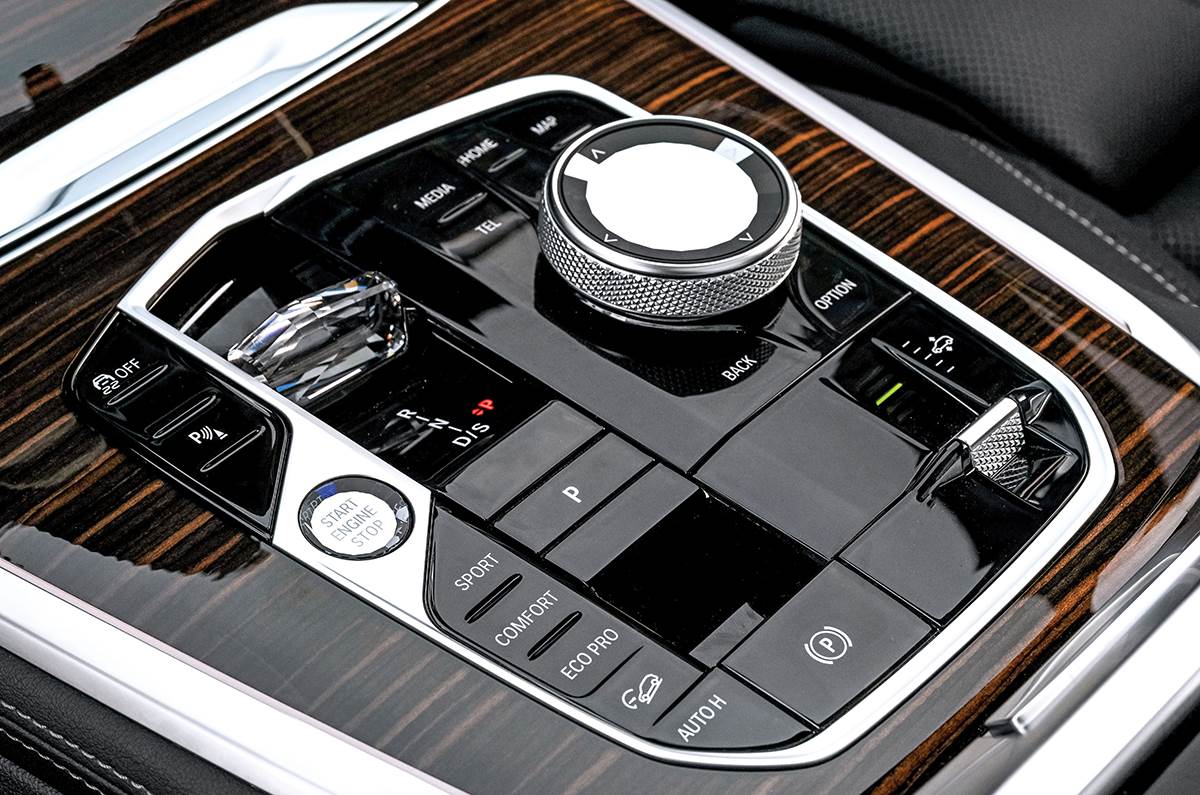 Plastic quality on gear pod feels very ordinary; a rare blemish.
Plastic quality on gear pod feels very ordinary; a rare blemish.
The dash also gets a new central console devoid of physical air-con buttons. Needless to say, the screen-based air-con controls are difficult to use on the move.
BMW X7 facelift: powertrain, ride, handling
Under the hood, the 40i gets an updated engine with a mild-hybrid system. A new version of BMW’s turbocharged 3.0-litre straight-six petrol, codenamed B58, it gets an electric motor/generator sandwiched between the gearbox and the drive unit. Power is up by around 50hp to around 380hp and the electric motor provides a 12hp and 200Nm of boost at low and medium speeds.
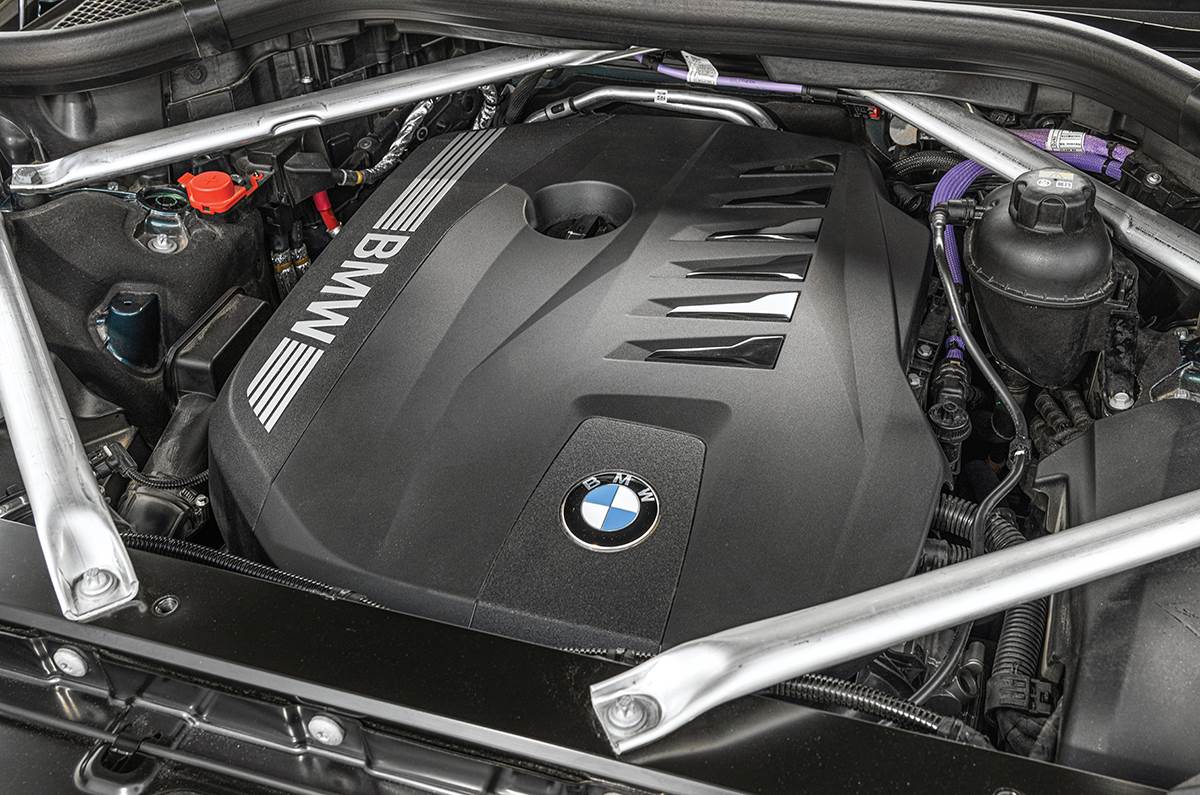 The engine gets 200Nm of electric boost from the hybrid system and the e-motor.
The engine gets 200Nm of electric boost from the hybrid system and the e-motor.
Climbing up to the driver’s seat, settling down behind the wheel and taking in the sheer size of this full-sized SUV initially takes me aback. It feels huge. This soon changes as I drive a bit. The direct controls, the effortless agility of the X7 and the accuracy with which this huge SUV can be steered soon put me at ease.
The car I’m driving is running some simply massive 22-inch wheels, and that has an effect on low-speed ride. Over poorly paved sections in and around Palm Springs, of which there are surprisingly a fair number, the set-up feels stiff. Low speed ride is busy, there’s a fair amount of lumpiness over broken sections and at times you can feel the manhole-sized wheels thud into potholes.
 Wheel sizes go up to 22 inches, can spoil ride.
Wheel sizes go up to 22 inches, can spoil ride.
Smaller wheels on the Indian-spec car will help reduce this for sure. As speeds increase, the X7 rides much better. The big BMW now displays an ability to iron out roads and that is very comforting. As I go faster, I realise even medium-sized bumps barely register and the BMW tracks straight even over rough sections.
BMW’s electrified straight-six is possibly the best bit on this car. Tap the throttle and responses are crisp, immediate and urgent. Partly down to the 200Nm of boost from the electric motor, the extra torque makes driving the X7 feel effortless, even at low engine speeds. The straight-six makes its presence felt once you cross 2,500rpm, after which you feel the ever increasing turbine-like tug from the engine spinning smoothly.
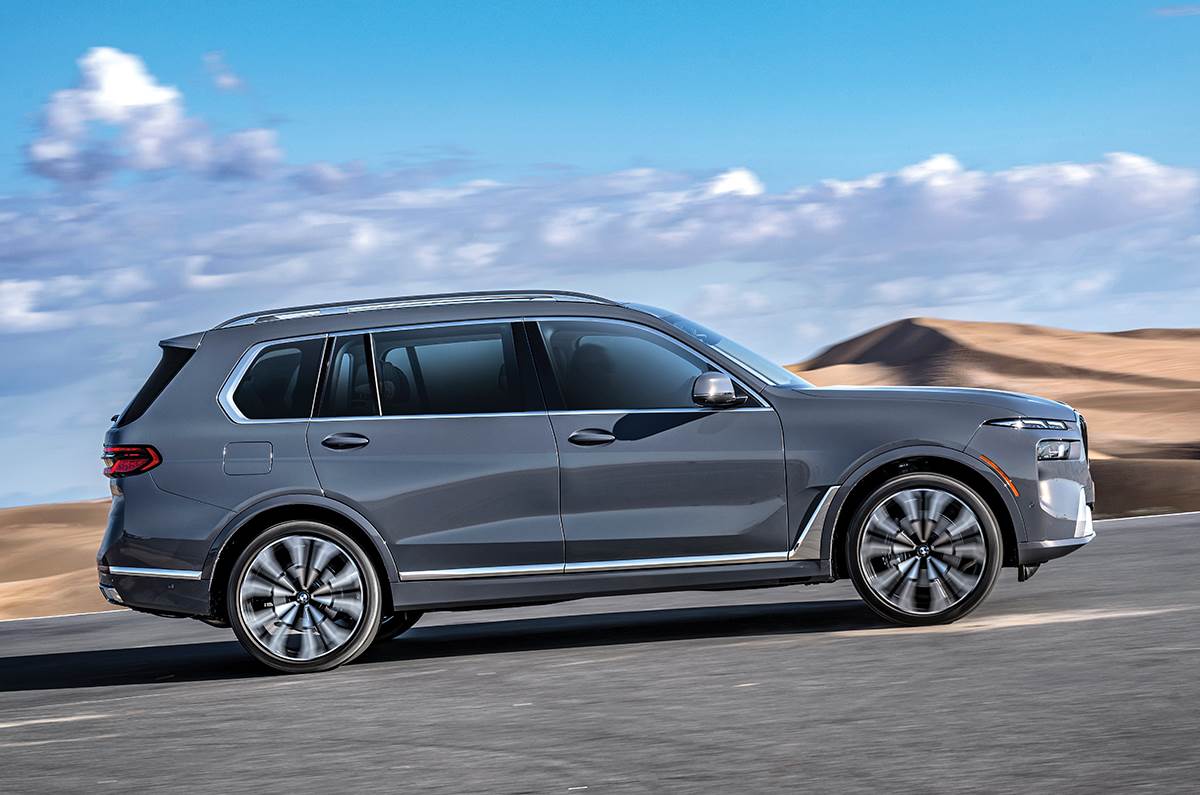 It feels surprisingly light on its feet and easy to manoeuvre.
It feels surprisingly light on its feet and easy to manoeuvre.
No, it doesn’t have the mid-range urge of a V8, but what feels just as good (if not better) is the friction-free and energetic manner in which it revs at higher speeds, especially with power stacked up high in the final 2,000rpm. Making the experience nicer is the 8-speed ZF gearbox, which is still the best around. Fast, smooth, jerk- and lag-free, and fully in-sync with your right foot, it is the perfect partner to this engine. The engine, in fact, is so strong, the hulking two-and-a-half ton X7 will accelerate from 0-100kph in just 5.8sec and do 250kph; helped by a drag coefficient of 0.32.
While there’s no getting around the mass of the SUV, BMW has made sure you can enjoy driving the X7. It feels surprisingly agile as you turn in, even more than the outgoing car, and feels nicely balanced as you enter corners. What makes it feel really special is that even though there is a fair amount of roll, it all feels well composed. The electrically driven anti-roll bars, the optional rear-wheel steering, the air suspension and the adaptive dampers, all seem to play their part.
2022 BMW X7 facelift: interior space, comfort
 Front seats are wide, big, and beautifully upholstered; offer very high levels of support and comfort.
Front seats are wide, big, and beautifully upholstered; offer very high levels of support and comfort.
What the X7 is really about, however, is an abundance of space and high levels of comfort. The seats pamper and allow you to relax. Case in point, the large seats up front. They are wide, a half-size larger than SUVs a class down and the level of support and adjustability they provide helps make the X7 experience feel special.
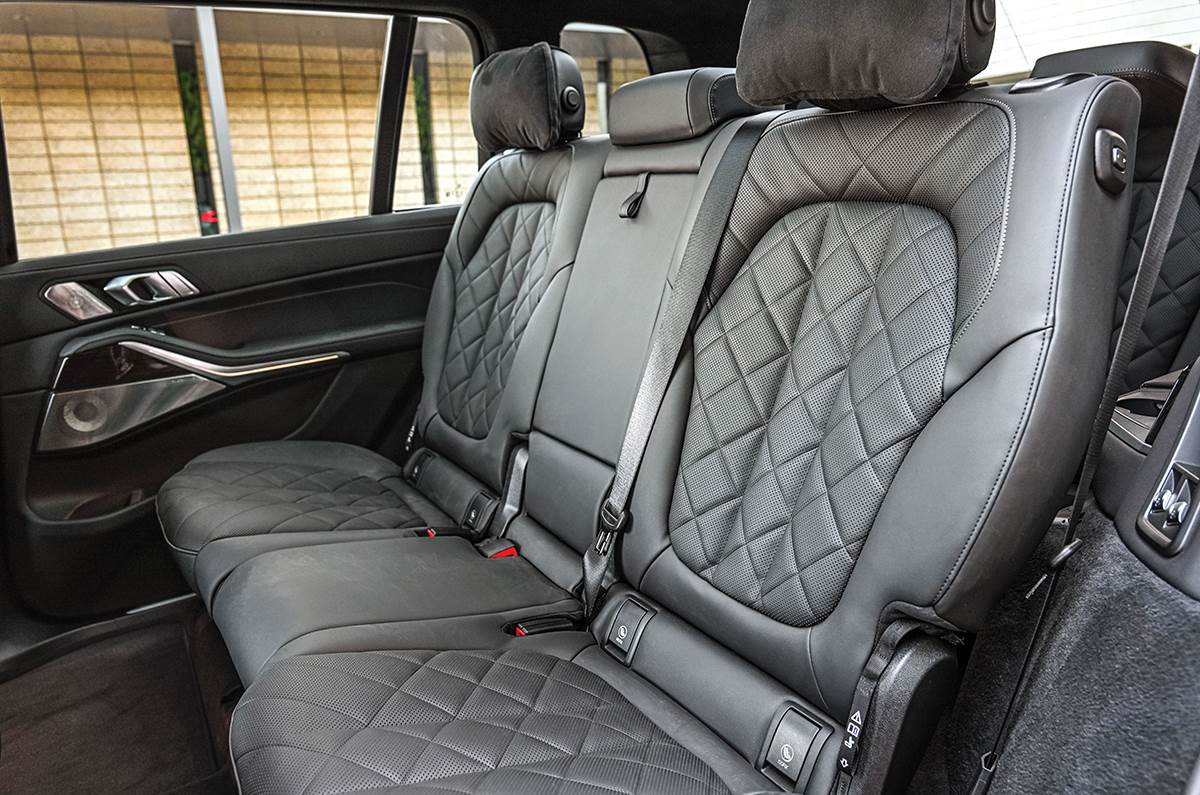 Space in the middle row is generous.
Space in the middle row is generous.
The cabin is airy and you have a good view of the road ahead. Then there’s the comfort and space on the second row. There’s loads and loads of legroom and headroom, the 6-seater has seats that are all but identical to those up front, and should you need to, you can even recline the back rest and really stretch out. The driver even has a button from where he can pull the front passenger seat forward, giving the passenger sat on the second row an abundance of legroom. But it’s the space and comfort in the third row that makes this one of the most comfortable cars in its class.
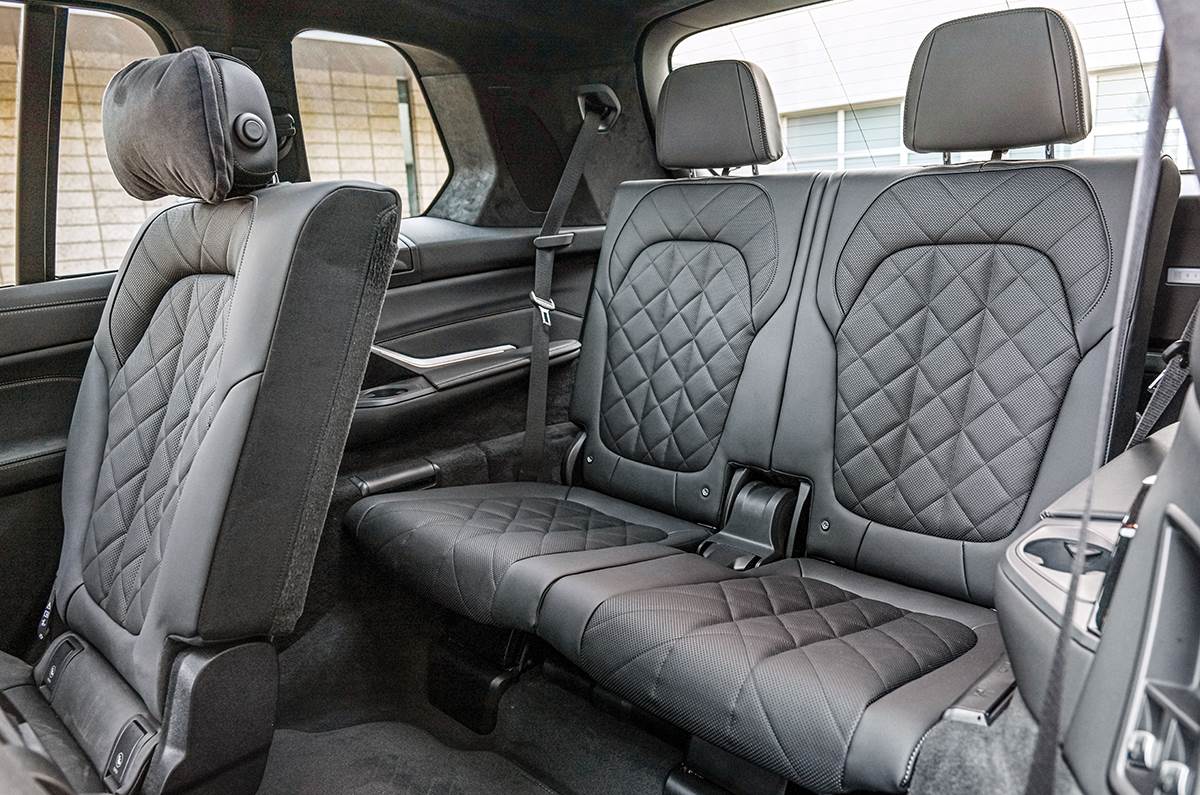 Adults can sit in the third row easily.
Adults can sit in the third row easily.
Access to the third row is quite easy, due to the large rear doors, and there’s sufficient space to turn and sit down. While the seats aren’t as comfortable as those on the second row, you can spend a long time in the back and not be worse for wear. And that’s even over a long journey. With all three rows up, you also get 300 litres of luggage space. And should you fold down the second and third rows you get upwards of 2,000 litres.
2022 BMW X7 facelift: verdict
BMW’S X7 has been comprehensively and thoroughly updated. Of that there is no doubt. Better equipped, nicer to drive and visually freshened, both on the inside and out, it is now ready to take on its rivals. The new cabin has given it more of an upmarket feel, it is more luxurious on the inside and the addition of mild-hybrid tech has given it better performance and efficiency. The looks will still polarise, but BMW doesn’t seem unduly troubled by this. In fact, if anything, BMW appears to be courting controversy.
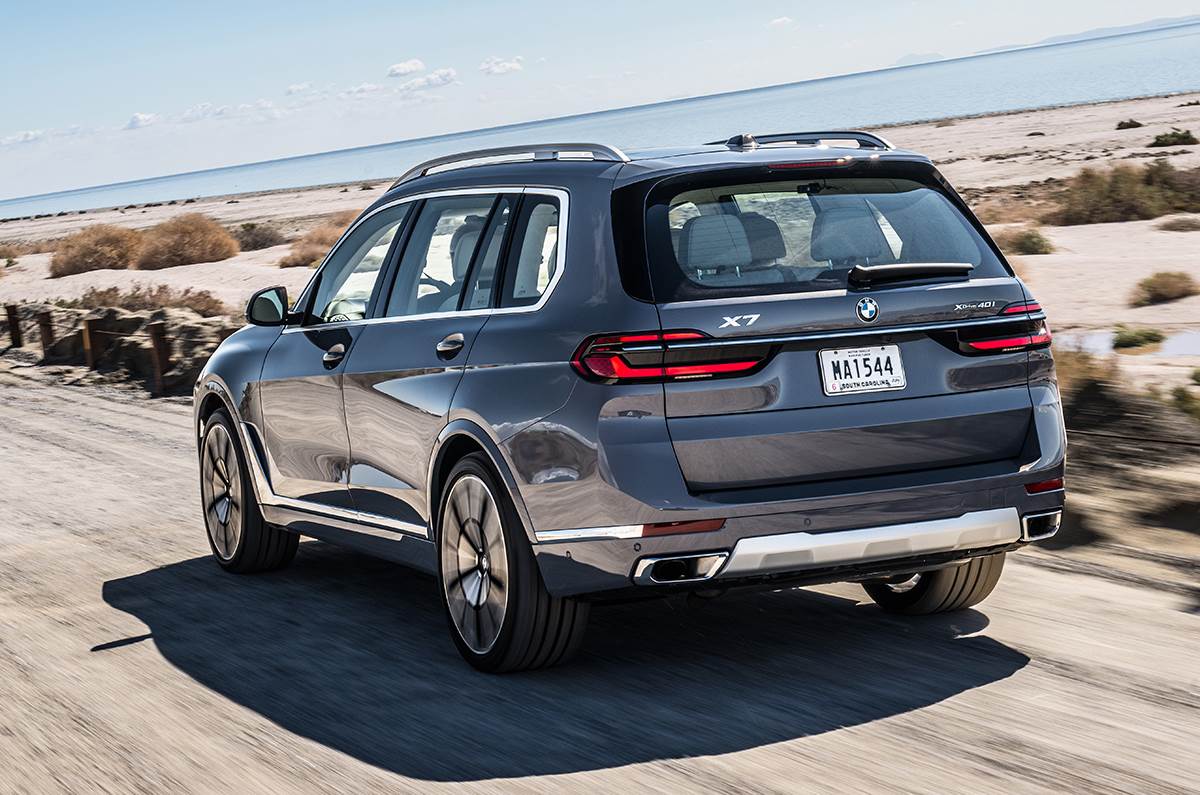
Apart from the petrol 40i, the X7 in India will also get a diesel, the 40d. The updated straight-six diesel delivers 340hp and 700Nm of torque, the latter going up to 900Nm if you add the 200Nm from the electric system. Many customers will opt for this. And then there’ll be a more powerful M-badged petrol as well. This, the M60i, is likely to replace the 50d in India and will be powered by a 390hp petrol V8 mated to the same hybrid system as the 40i and 40d. Prices are expected to start at around Rs 1.25 crore and top out at Rs 1.90 crore for the M60i version.
Also see:
Source link

